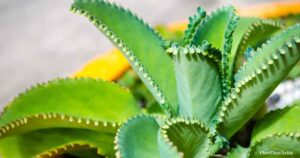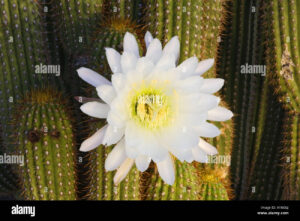Growing a cactus from seed can be a delightful yet daunting endeavor. Have you ever wondered about the intricate journey from a tiny seed to a spiky sentinel of the desert? While many gardeners content themselves with purchasing mature plants, there exists a certain charm in cultivating a cactus from its infancy. The process can pose its challenges, yet with an informed approach, you can navigate the path to successful germination.
In this guide, we will explore the essential steps to grow a cactus from seed, covering everything from seed selection to nurturing your newfound green companion. Let’s embark on this botanical adventure!
Choosing the Right Seeds: A World of Options Awaits
Before you dive into the nurturing phase, the first step is selecting the appropriate cactus seeds. The diversity within the world of cacti is astonishing—ranging from the vibrant Peruvian Apple to the less conventional Easter Lily cactus. Understanding your climate and the growth requirements of various cacti will help you make an informed choice.
Considerations such as native habitats and temperature preferences can guide you to the most suitable species for your environment. If you’re a novice, starting with easier-to-grow varieties like the Golden Barrel or the Mammillaria group can provide a rewarding experience.
Once you’ve made your selection, be sure to source your seeds from reputable suppliers. Quality seeds have far higher germination rates, enhancing your potential for success. As you sift through your options, don’t forget to indulge your curiosity—explore the characteristics and features of different species, imagining the vibrant vistas they represent!
Preparing for Germination: Setting the Stage for Growth
With your seeds in hand, it’s time to lay the groundwork for germination. The proper setup will significantly influence the success rate. One critical aspect involves choosing the right medium. Cacti thrive in well-draining soil, so it’s advisable to use a specialized cactus soil mix or create your own by blending potting soil with sand or perlite.
Your container also plays a vital role. Opt for shallow trays or pots with drainage holes that allow excess moisture to escape. While venturing into cactus cultivation can be exciting, be mindful of the delicate balance between water retention and drainage. Excess moisture can lead to damping-off—a common issue that can decimate your budding seedlings.
Once you’ve prepared your planting medium and containers, sow the seeds. A common mistake among beginners is burying the seeds too deeply in the soil. Instead, sprinkle them evenly across the surface, then cover them lightly with a fine layer of soil. This method encourages even sunlight exposure, aiding the germination process.
Creating the Ideal Environment: Warmth and Humidity
Climate mimics nature’s embrace, fostering suitable conditions for germination. Cactus seeds typically require warmth and humidity to sprout effectively. A temperature range of 70-80°F (21-27°C) is optimal. Should your indoor environment be inconsistent, a heat mat can provide the necessary warmth.
Humidity is equally crucial during this stage. Cover your containers with plastic wrap or a humidity dome to maintain moisture levels. Regularly check for condensation; if it begins to form, remove the cover for a spell to prevent an overly humid environment which can lead to fungal growth.
Patience is vital here. Depending on the species, germination can take anywhere from a few weeks to several months. Monitor your soil moisture—keeping it damp but never soggy. As you await the emergence of tiny seedlings, consider the challenges of nurturing young plants. For example, do you know how to diagnose and combat fungal infections that can threaten their vitality?
Nurturing the Seedlings: A Journey of Growth
Once your seedlings have sprouted, the real journey begins—caring for them during their early developmental stages. At this point, you may wish to begin acclimatizing them to drier conditions. Gradually reduce humidity to strengthen the seedlings and prepare them for life outside the controlled environment.
As they grow, remember: cacti are resilient yet require specific attention. Offering adequate light is paramount; a south-facing window usually provides the best setting. However, avoid direct sunlight for too long initially, as this can scorch tender leaves.
Watering requires a distinct approach known as the soak and dry method. When the top inch of the soil feels dry to the touch, thoroughly water the seedlings, allowing excess water to drain out. Ensuring they do not remain in standing water will help prevent rot—a frequent foe of young plants.
When the seedlings reach a few inches in height and develop their second set of spines, it’s time to consider repotting them into individual pots. This transition not only provides more space for roots to expand but also allows for a unique opportunity to experiment with decorative pots that will showcase your vibrant plants!
Conclusion: Embrace the Journey
Growing a cactus from seed is more than just an exercise in patience and precision; it’s a journey filled with curiosity, learning, and discovery. As you watch your seedlings blossom into mature cacti, you will not only cultivate plants but also gain insight and connection with nature itself. Whether you choose to fill your garden or make them enduring gifts, each cactus holds a story birthed from a tiny, resilient seed.
So, are you ready to embark on this adventurous and enchanting horticultural journey? With determination and careful attention, success is not just a possibility—it is your impending reality!





Leave a Comment